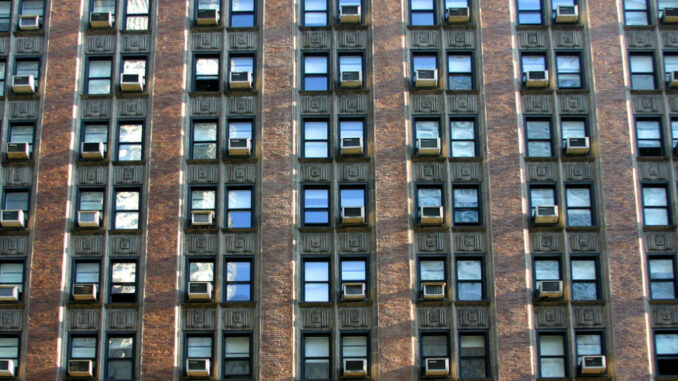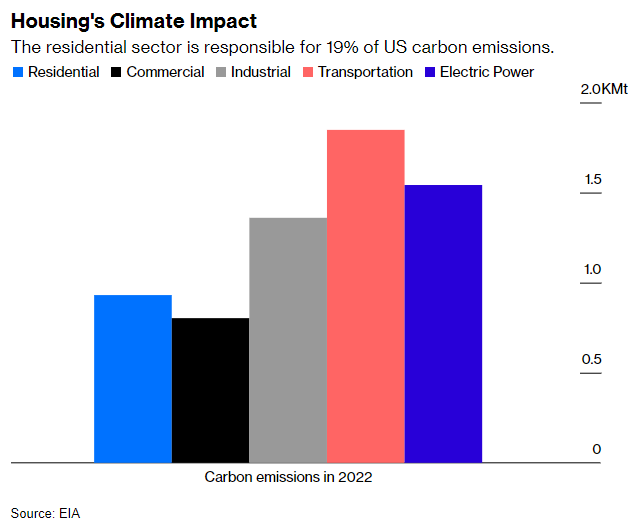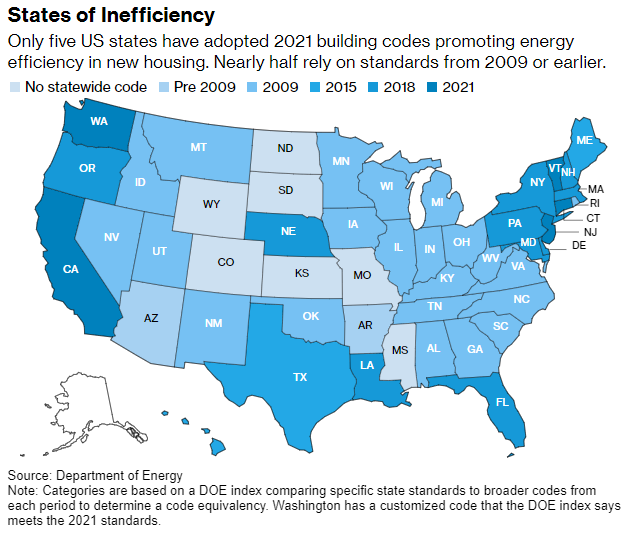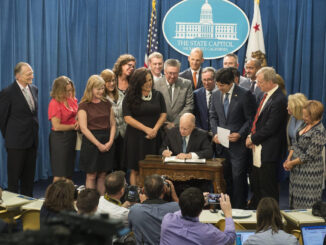
Back in the 1990s, political guru James Carville said he wanted to be reincarnated as the bond market because it could “intimidate everybody.” Here in the 2020s, you might prefer to come back as a homebuilder. The industry has the political muscle to protect its profits at the expense of both homeowners and the climate.
In some fast-growing parts of the US, lobbyists are frustrating efforts to make new homes more efficient and compatible with clean technology, making it that much harder for the rest of us to avoid the worst effects of a heating planet. They’re doing it in the name of housing affordability, naturally — but it doesn’t hurt that they’re keeping a lid on homebuilders’ costs at the same time. Their sabotage will cost homeowners much more in the long run.
In 2021, the International Code Council, a nonprofit group that every few years suggests building codes for the whole country, released an aggressive set of proposals that could reduce residential carbon emissions and annual energy costs by 9%, according to one estimate. This was in response to a groundswell of requests from local officials to update standards that had long been stagnant.
Housing’s carbon emissions account for 19% of the US total. Making homes more efficient is crucial to zeroing out emissions by 2050 and limiting long-term global warming to 2 degrees Celsius above preindustrial averages. The cherry on this sundae is that efficient houses put money in their owners’ pockets in the form of lower utility bills and renovation costs. Unlike wind farms or carbon taxes, this is a green fix that should have broad public support.

Homebuilders apparently hate it.
As the Washington Post recounted last week, the National Association of Home Builders and other lobbyists first attacked and watered down the ICC proposals, including nixing changes that would have made it easier to install electric-vehicle chargers in homes. Then they tried to blow up the ICC code-writing process, making it impossible for local officials to vote on them.
Then they pushed state legislatures to reject the new building codes, sometimes successfully. Tapping popular anger about housing costs, they argue the new standards would raise construction expenses by $20,000 per house, making them less affordable for working-class people.
The pitch worked in North Carolina. Its Republican-controlled legislature not only rejected the ICC’s codes but made it impossible to adopt any new codes until 2031. North Carolina Home Builders Association lobbyists actually helped write the law, North Carolina Public Radio reported. For good measure, the bill also blocked a requirement that new homes be inspected for their ability to withstand hurricane-force winds.
The homebuilders’ cost argument is deeply flawed in at least two ways. For one thing, that $20,000 figure comes from an NAHB survey of just eight homebuilders, according to NCPR. It appears to be a wild exaggeration. A federal study found the new standards would actually raise building expenses by $4,700 to $6,500 for a single-family home. Lower energy bills mean homeowners would recoup their upfront costs in just a few years. And hiring a contractor to upgrade efficiency later would cost many multiples of that.
“The best time to make a better building is before it’s built,” said Denise Grab, principal expert on the carbon-free buildings team at the nonprofit Rocky Mountain Institute.
More important for the rest of us, all those efficient new houses in Alternate Universe North Carolina would have prevented 130,700 metric tons of carbon emissions in the first year of operation alone, matching the output of 29,000 gas-burning cars. They would have created more than 60,000 jobs in 30 years. And lower energy bills would have saved North Carolina homeowners $5.3 billion over 30 years. Extend that to every state, and pretty soon you’re talking real money.
Overriding the preferences of architects, building inspectors, HVAC engineers, environmental groups and more, Wisconsin’s Republican-run legislature also rejected the new codes last year. The state’s building codes are essentially frozen in 2012. “We now are looking at codes becoming so antiquated that modern materials aren’t even in the book,” one building inspector told the Wisconsin Examiner.
When it comes to energy efficiency, the situation is even worse. The US Department of Energy ranks each state by the “code equivalent” rating of their efficiency standards. Wisconsin and North Carolina are among 24 states with standards basically locked in 2009 or earlier. Eight states have no standards at all. One is Colorado, where homebuilders are, you guessed it, lobbying against a bill to adopt stricter codes.

This isn’t the only way builders are risking a miserable future for their customers. They’re also trying to persuade Arizona to end a decades-old requirement that new subdivisions must prove they’ll have water for 100 years. The rule has helped Arizona’s population boom without overly taxing groundwater resources. To homebuilders, it’s just an annoying obstacle to building more houses.
The situation isn’t hopeless. One chief hurdle to changing codes is simply inertia: Overhauling operations can be time-consuming and expensive for builders and contractors. Policymakers can grease the skids, and make the transition more fair, with financial assistance, suggests Joe O’Brien-Applegate, a building-decarbonization expert with the Natural Resources Defense Council, a nonprofit advocacy group.
The federal government can use the lure of Inflation Reduction Act money to encourage states to adopt stricter standards. The Department of Housing and Urban Development has proposed requiring mortgages it helps finance comply with 2021 codes. Regulators and local officials have tools beyond the building code to encourage building efficiency, including taxes on energy use.
The good news is that builders haven’t widely squashed the new codes just yet. Several builders actually favor stricter codes. “Efficient, resilient buildings and low bills are what homeowners want,” said Grab of the RMI. “Ultimately all builders will have to go in that direction.”
There’s still time to generate public support for common-sense standards that will help both the climate and homeowners’ finances — but maybe not much time. The gas-stove wars are an example of how quickly industry lobbyists can move. Cities had only just begun to ban gas hookups in new buildings when 20 states quickly passed laws prohibiting such bans. Proponents of change need to be just as nimble.



